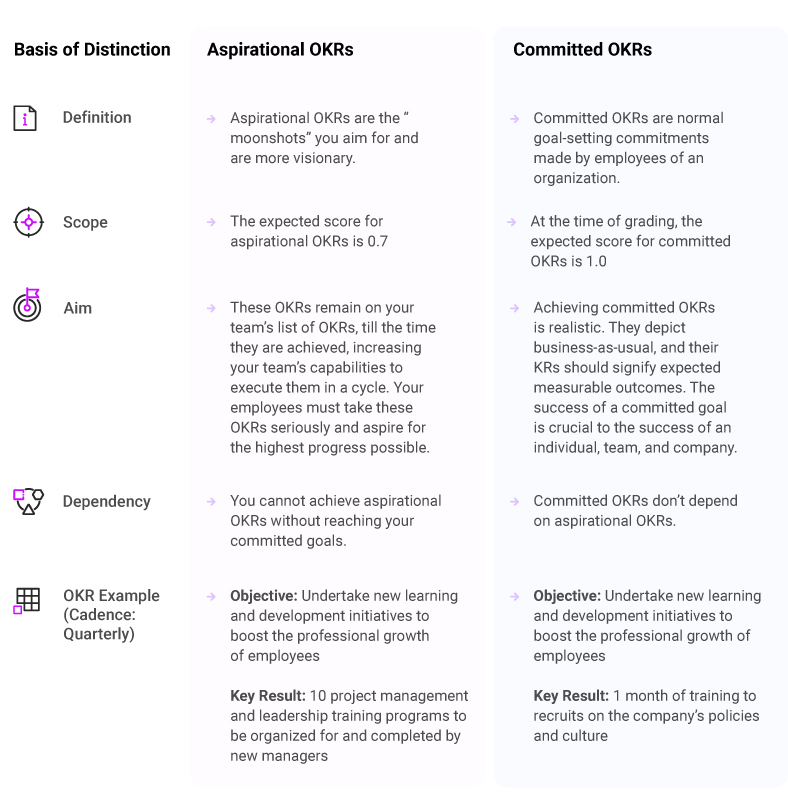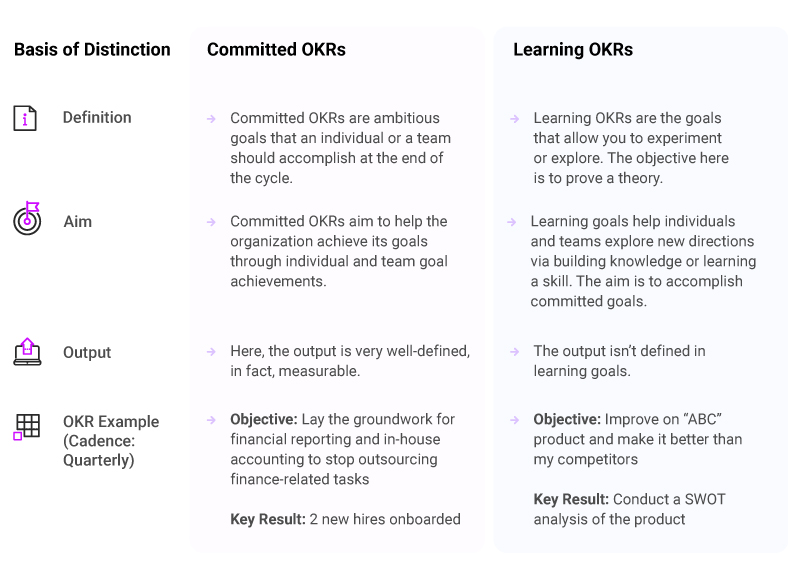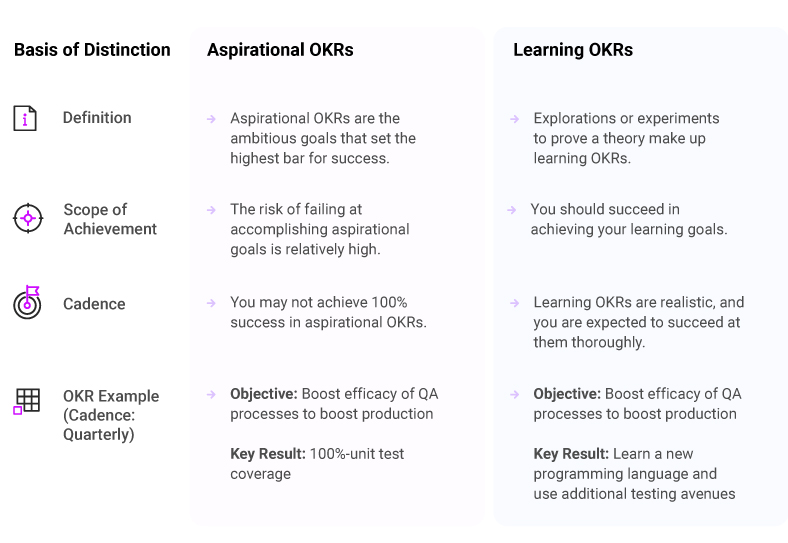July 21, 2022
Aspirational OKRs, Committed OKRs, Learning OKRs. Are They the Same?

Are you often bogged down with questions like “Where do I want to go?”, “How will I know once I have reached there?” If yes, objectives and key results (OKRs) help you answer these questions. You can classify OKRs as aspirational, committed, or learning based on your answers to the questions above. Before we understand how the three types of OKRs differ, let us review the OKR basics.
What are OKRs?
OKRs are an effective goal-setting and leadership tool to communicate what you wish to achieve and what individual and team targets you must meet to accomplish the organizational objectives. Leading organizations use OKRs to set ambitious, challenging goals with measurable results. Objectives and key results are how you track progress, create alignment, and boost engagement around measurable goals. Different OKRs have different purposes, so you must know where a specific OKR type may be instrumental.
What are Aspirational OKRs?
Aspirational OKRs are the goals that set the highest bar for success. They are ambitious and soaring objectives where 100% completion is impossible likely. Also known as moonshots or 10x goals, they exceed your team’s capabilities to execute in a period, say a quarter. Aspirational OKRs must remain on your team’s OKR list until they are achieved. Though the risk of failing at these OKRs is relatively high, they prevail in pushing your team to think bigger than committed OKRs. Typically, 66-70% progress achievement out of 100% can already be a success. Remember, if you attain meaningful progress, it is not wrong to fall short of an aspirational OKR. “When you aim for the stars, you may come up short but still reach the moon,” said Larry Page, co-founder of Google.
An Example of Aspirational OKR for the quarter could be:
Objective: Increase market size through brand switching by customers
Key Result: Get 20 big customers
What are Committed OKRs?
Committed OKRs are ambitious goals that your team should accomplish before the cycle comes to an end. You should aim to achieve these OKRs by 100%. Though a committed OKR stretches your team, achieving it is realistic. After all, the success of this goal is crucial to the success of an individual, team, and company. Note that committed OKRs depict business-as-usual, and their key results (KRs) should signify expected measurable outcomes. Metrics in the KRs must be met in full and in time.
Committed OKRs are met at an organizational level and by different departments. Individuals or teams may alter their schedules and do everything possible to accomplish this type of OKR.
An Example of Committed OKR for the quarter could be:
Objective: Manage day-to-day operations to ensure consistent and seamless delivery of business processes
Key Result: 5% expense cost reduced from 10
Create aspirational and committed OKRs on your own with these OKR Examples.
What are Learning OKRs?
What am I trying to learn? What is the hypothesis that I am trying to prove? You get the answer to these questions when you set learning OKRs. Learning OKRs are the goals that allow you to experiment or explore. Explorations or experiments to prove a theory make up learning OKRs. This way, your teams can explore new directions while still adopting and following a systematic approach to gauge success. You may expect your learning OKR to report findings, verify, or refute the hypothesis. They are ideal for defining success when you are unsure of the output or it isn’t defined. The key to developing an effective learning OKR is to find out what information gives you insight(s) on how to proceed and write your next set of OKRs.
An Example of Learning OKR for the quarter could be:
Objective: Make “XX” an exceptional service for my customers
Key Result: Find out, document, and analyze the pain points of users
Differences Between Aspirational and Committed OKRs

Differences Between Committed and Learning OKRs

Differences Between Aspirational and Learning OKRs

Are You Confused Between Committed with Aspirational OKRs?
- The safest bet is to label aspirational and committed OKRs properly. Your teams should never confuse the two.
- It is ideal for defining success at the beginning of an OKR cycle. Don’t wait until the middle or end of the cycle to determine and communicate objectives and key results. This leads to a frustrated team and their wasted efforts.
- To label an OKR aspirational set a high bar or make it ambitious. If an OKR looks reasonably achievable, it is more likely a committed OKR.
Be an intelligent leader and state clearly whether accomplishing an OKR is just a commitment or an aspiration. Before your team gears up, they should know how to prioritize and measure their efforts. An OKR goal setting software that enables you to define aspirational and committed goals come in handy here.
